TELEPHIUM ssp. MAXIMUM (L.) H. Ohba, 1977
Synonyms :
Sedum telephium var. maximum L.(1753) / Sedum telephium ssp. maximum (L.) Krocker (1790) / Sedum maximum (L.) Hoffmann (1791) / Anacampseros maxima (L.) Haworth (1819) / Hylotelephium maximum (L.) Holub (1978)
Sedum maximum Suter (1802)
Sedum latifolium Bertoloni (1819)
Sedum telephium var. rotundatum Döll (1843)
Anacampseros assurgens Jordan & Fourreau (1866)
Anacampseros cebennensis Jordan & Fourreau (1866)
Anacampseros chlorotica Jordan & Fourreau (1866)
Anacampseros collina Jordan & Fourreau (1866)
Anacampseros corsica Jordan & Fourreau (1866)
Anacampseros delphinensis Jordan & Fourreau (1866)
Anacampseros erubescens Jordan & Fourreau (1866)
Anacampseros millieri Jordan & Fourreau (1866)
Anacampseros minor Jordan & Fourreau (1866)
Anacampseros pachyphylla Jordan & Fourreau (1866)
Anacampseros praeruptorum Jordan & Fourreau (1866)
Anacampseros recurva Jordan & Fourreau (1866)
Anacampseros serotina Jordan & Fourreau (1866)
Anacampseros subrotunda Jordan & Fourreau (1866)
Anacampseros verlotii Jordan & Fourreau (1866)
Sedum maximum fa rufescens Schur (1866)
Anacampseros ternata Jordan & Fourreau (1866)
Sedum maximum var. scherfelii Borbás (1890) / Hylotelephium scherfelii (Borbás) Grulich (1984)
Sedum maximum fa umbrosum Junge (1909)
Sedum glaucopruinosum O. A. Eklund (1928) / Sedum telephium var. glaucopruinosum (O. A. Eklund) Hiitonen (1932) / Sedum maximum ssp. glaucopruinosum (O. A. Eklund) Soó (1963)
Sedum pseudotelephium Eklund (1928) / Sedum telephium var. pseudotelephium (Eklund) Hiitonen (1933)
Sedum telephium ssp. suecicum Hylander (1945)
Sedum maximum fa nigrum Domokos (1953)
Sedum maximum fa transdanubicum Pénzes (1956)
Sedum maximum fa domokosii (Pénzes) Soó (1963)
Sedum maximum fa atropurpureum hort. ex Soó (1966).
Distribution : Europe, western Asia.
Differs from ssp. telephium :
Leaves alternate, opposite or whorled, ovate or broadly oblong to oblong-ovate, 4 - 10 cm long, sometimes glaucous, bluntly dentate to subentire, base cordate-amplexicaul or truncate.
FIowers greenish- or yellowish-white, rarely purple.
Ray Stephenson (Sedum, Cultivated Stonecrops, 1994, p 275) :
As the name suggests, Hylotelephium telephium ssp. maximum is a giant stonecrop. It is quite common in gardens in its multitude of forms or as a parent of a cultivar, but is duller than many of the other members of this group: opposite-decussate leaves are drab green to brown-maroon, and flowers are an inconspicuous cream color. Plants can reach 80 cm (32 in) high, but 40 cm (16 in) is more usual. Plants are sparingly leafy with long gaps between the leaf pairs which diminish in size up the stem.
Habitat : Native to mainland Europe, this species grows usually in forest glades and rich soils of alluvial meadows.
Main points of distinction : Bluntly dentate, opposite-decussate, well-spaced leaves (Leaf shapes, fig. 1k), and creamy flowers are an important combination of characteristics that separates this stonecrop from Hylotelephium telephium ssp. fabaria [see H. telephium ssp. telephium], which has more upright leaves and purple flowers, and from H. telephium ssp. ruprechtii, which has identical flowers but cordate, stem-clasping leaves. 2n = 48.
Variation : Unfortunately, this subspecies is exceptionally varied, and, because it seems more willing than any other species of Sedum [sensu lato] to hybridize with near relatives, its range is fogged by intermediates with other species. For example, leaves of H. telephium ssp. maximum can be alternate, whorled, or sometimes glaucous, and in rare reports, flowers of the true species are purple. These factors make identification very difficult, but fortunately not all these contrary features occur in one regional race.
The variation of greatest horticultural importance is usually referred to as Sedum [Hylotelephium] maximum var. atropurpureum and is suffused purple throughout. In my experience H. telephium ssp. maximum 'Atropurpureum' is not true from seed, as it seeds readily with mixed progeny. It is a major element in a great multitude of cultivars, including 'Arthur Branch' and 'Philip Holbrook'. Against a light background, these dark red to violet forms can be useful herbs for formal floral displays.
Horticulture : As this species comes in every shade between dull green and deep violet, it is important to choose the right plant for the desired spot. I only recommend this species for a herbaceous border or for hybridizing to create new cultivars.
Observations au sommet du / on top of mont Papuk, Croatia, alt. 940m. Calcaire triasique. 14 mai 2011 :
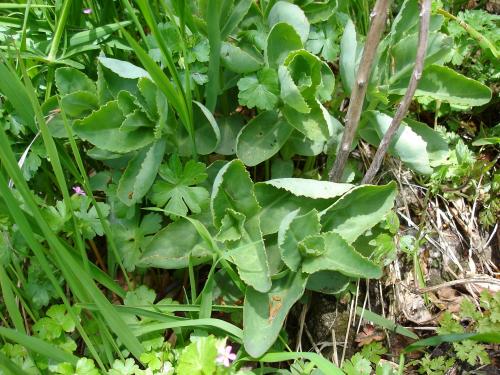
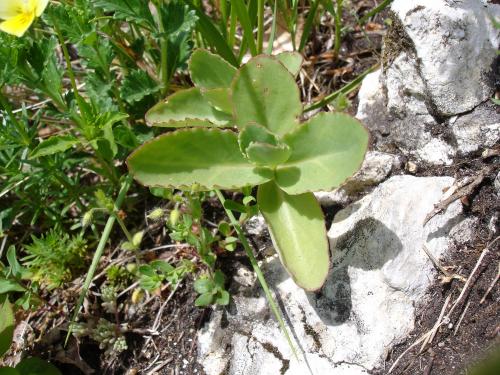
Photos Marko Doboš
Observations à Bassurels, massif des Cévennes (France - Lozère ) alt. 700m, sol acide schisteux. 11 juin 2011 avec / with Sedum album, S. dasyphyllum, Petrosedum rupestre :
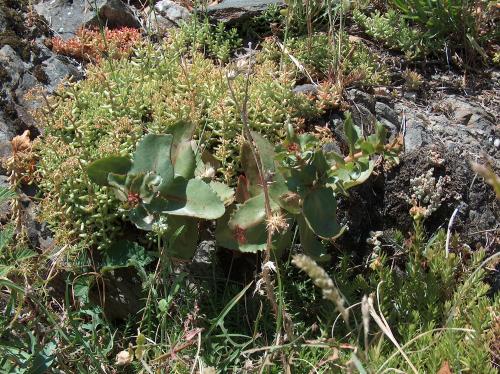
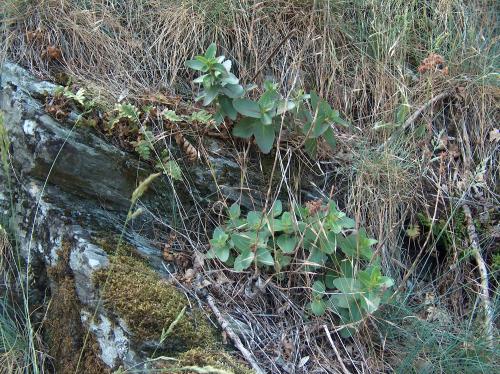
Plantes en culture / Plants in cultivation
Floraison / flowering 28 août 2010 :
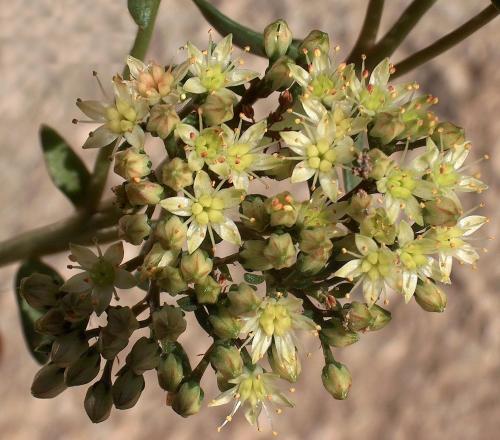
Les nouvelles tiges apparaissent sous forme de rosettes en hiver / Winter rosettes (11 mars 2012) :
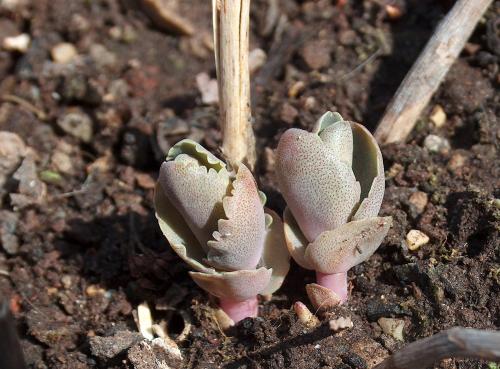
To see more photos : Crassulaceae in the Cévennes Mountains by Eric Barbier